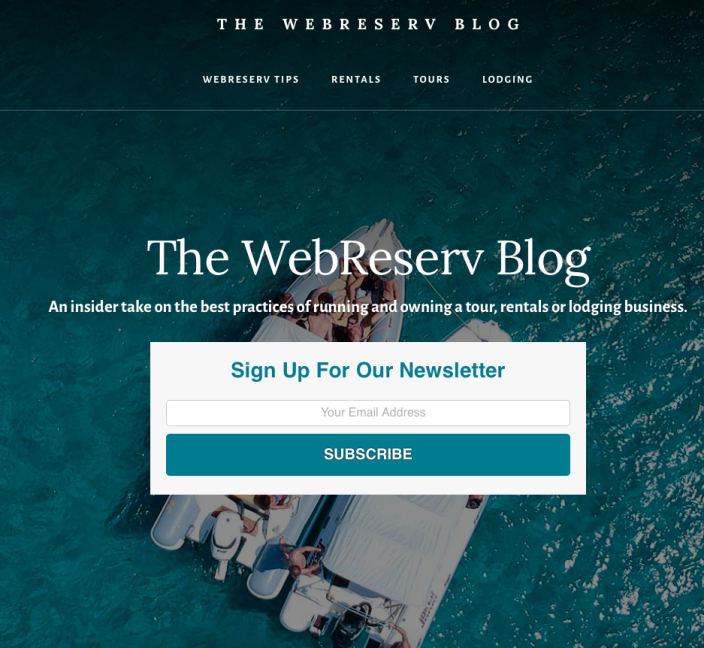Small businesses
New Blog! Check it out today.
We are thrilled to share our new blog site – check it out here: NEW WebReserv Blog
We continue to share our knowledge of the rentals, tours, and lodging industries including using tips for your business and how WebReserv works with you.
Thank you for reading and sending feedback.
Contact us today for any questions you have about WebReserv and your online booking system.
Online Reviews: How to get your customers to write one
Let’s face it, we all want to be liked. This is true for individuals as well as your business. You’ve worked hard to provide an excellent service to your customers, and it’s a great  reassurance when customers sing your praises.
reassurance when customers sing your praises.
Online reviews are key if you want to attract more customers to your rental, activity, or tour business. Nowadays, travelers and adventure seekers use online reviews when deciding where to go and what to do. Beyond a personal endorsement from a friend or family member, an online review is the next best thing.
How do you encourage your customers to write a review without seeming too pushy or violating a rule on the review sites? It’s a fine line indeed, so let’s share simple ways it can be done tactfully.
Make it easy
Have links to your review sites posted on your website as well as in your storefront or shop. In addition, after their visit send them a follow up email thanking them for their visit, and add a link to your review site. If you use an online booking system, many will offer automatic emails that can be set up to send a day or two after their visit.
Get clever
Come up with a creative way to entice a customer to post a review. A great idea is to give your parting customers a small gift, such as a key chain, water jug, or coaster that includes a note card on it asking them how they liked their experience. “How’d you like us? We’d love to know.” Add the link to your Yelp or TripAdvisor page to the note, so they will know where to go. This simple gesture will likely stand out to your customer enough that they’ll want to share it. After all, it’s the little things in life that mean the most.
Just ask
At the end of their visit, ask them to write a review. If they had an awesome time, then this is a easy task for a customer to do. Asking may feel uncomfortable, but if it’s done in a gracious and humble way, then it will be appreciated. If you’re sure they’ve had a great time, then say something like, “I would appreciate it if you told your friends and family about us. In fact, if you go to our page on Yelp, you can write about your experience.” Give them the link, and say thank you.
In the end, it’s important to recognize that as a small business, good or bad reviews can be the deciding factor for choosing you. Provide an excellent service, engage your customers, build rapport, and this will naturally bring people to review you. In addition, respond quickly and appropriately to negative reviews. Doing so, will show a potential customer that you care and want to make things right if it wasn’t. That type of business mindset speaks volumes. Cheers!
End of Season? How to keep the momentum going during your off time.
As a seasonal business, you get the benefit of having some down time when you are in your 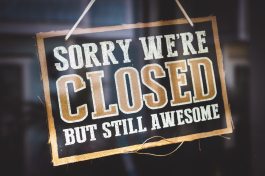 off season. You’ve worked so hard this summer with your rental or tour business, that you’re due for a much needed break. Alas, you’d love it if you were able to continue to receive bookings for next season, right? Check out these tips below on how to keep things rolling while you are taking a break.
off season. You’ve worked so hard this summer with your rental or tour business, that you’re due for a much needed break. Alas, you’d love it if you were able to continue to receive bookings for next season, right? Check out these tips below on how to keep things rolling while you are taking a break.
24/7/365 Booking with an Online Reservation System
Many travelers (myself included!) love to plan their next adventure right after they get home from vacation. For popular vacation destinations, booking early is the key to get what you want for rentals and activities. Allowing your customers to book for next season is important and appreciated. Having an online booking system** that is up to date and shows your availability for next season is a great way to get bookings while you are sipping Mai Tais in Hawaii (what? you’re not?). Customers can book at anytime that is convenient for them, and do not have to contact you directly to make a reservation. It’s a win-win for both you and the customer.
**If you don’t currently have an online booking system, now is the time to get one! WebReserv offers an affordable and easy to use booking system for rentals, lodging, and tours. Contact us today for more information.
Offer Early Booking Discounts
Traveling is fun, but it can also be expensive. If you offer discounts for booking early to your customers, this is a great way to earn income during your downtime. Everyone is looking for a great deal, and offering a small discount for booking their next summer adventure early is an excellent way to lock in that reservation now. Setup a promo code using your booking system, and advertise the code on your website.
Reach out to your Customers
Utilize your favorite email marketing program to send newsletters or updates to your customers over the winter season. Add pertinent information about your business and include upcoming excitement for next season (“Brand new kayaks or “new sunset tour added“). This will keep your business fresh in their mind as they’ll remember what a fun time they had while visiting. Include that discount code you created for early booking in the information, too!
All in all – enjoy your off time as well as look forward to your next season with incoming sales all year round.
Website Makeover: does your webpage need one?

As a tour and rental operator, your website is your best (and perhaps only) marketing tool you have. Your website is a reflection of you and your offerings, so if you haven’t checked in with your site since it was created, now is the time to do so. Check out these tips to help your website with its makeover.
Update your Content & Pictures – Having great descriptions of your offerings along with beautiful pictures is essential. Review your content on your site, and make any updates to descriptions and images to ensure you are presenting your business in the best way possible. Don’t forget to proofread! Spelling errors and incorrect grammar is a huge turnoff to potential customers.
Be clear and concise – When a visitor goes to your website, make sure the information is clearly laid out in an easy to understand manner. If your site is confusing or difficult to navigate, then visitors will likely leave right away. Get ideas from other websites when it comes to design and content. Find what you like about other sites, and incorporate the best aspects into your own site. Review your site with the customer in mind, and make adjustments as needed.
Mobile Friendly is your Friend – How does your website look on a phone or tablet? A 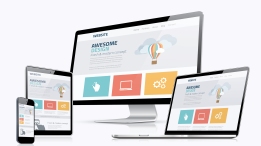 high percentage of customers looking for your services will be uses these types of devices for find you, so it’s crucial that your site it mobile friendly. Many website builders (such as Wix, Weebly or Wordpress) have template designs that are responsive. Responsive means that when your site is viewed it will resize itself to look good on that device. Make sure your site is either responsive or have a separate site that is specific to mobile users.
high percentage of customers looking for your services will be uses these types of devices for find you, so it’s crucial that your site it mobile friendly. Many website builders (such as Wix, Weebly or Wordpress) have template designs that are responsive. Responsive means that when your site is viewed it will resize itself to look good on that device. Make sure your site is either responsive or have a separate site that is specific to mobile users.
Work on your SEO – Search Engine Optimization (SEO) is the process of optimizing your website so it results in your site’s higher ranking when doing a Google search. It’s crucial for you to make certain that your site comes up at the top when folks are searching for activities or rentals that match your business. Simply put – if your website comes up first, chances are that visitors will click on your site and book with you. Do your homework to ensure your SEO is at it’s best.
Call to Action – As a tour or rental business, you want to make it easy for potential customers to book with you. This means you’ll need to have the ability to book online through your website, and make the process seamless with an easy to use checkout process. A Call to Action is button or link on your site that gives them this option to “Book Now” or “Contact Us”. Adding these buttons to each page of your website is ideal.
Updating your website from time to time is a great way to stay on the top of your game. If you’re not sure how to go about doing this, and you have it in your budget, hire a professional. There are many great and talented website designers out there that can assist you in building or updating your site.
Doing what you Love and Getting Paid: the need for a Payment Gateway.
Getting paid. It’s an important part of your business, right?! As a small business owner, you went into business because you LOVE what you do AND you wanted to get paid for it. It’s a wonderful match, so you’ll want to make sure you know how to achieve this. In order to get paid for the service you provide, you need a payment gateway. 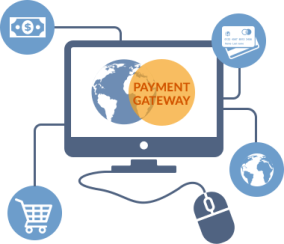
What’s a Payment Gateway, you ask? In short, the payment gateway is what allows you to take online payments, and is the bridge between your booking platform and your bank account. If you own a rental business or a tour company, and want your customers to not only book online, but also pay online, then getting a payment gateway is the way to go.
Payment Gateways are a great asset to your business and gives you and your customer the piece of mind that is needed when purchasing a service online. Some of the key features are Security, Convenience, and Compatibility.
Security: This is probably the most important feature when considering taking payments. This means choosing a payment gateways that is equipped with fraud prevention and one that is compliant with PCI standards such as data encryption when storing credit card information.
Convenience: Having a payment gateway allows you to receive purchases and bookings 24/7. It alleviates you from having to get the customer’s credit card information, and manually enter it to get paid. It all happens in an instant with a payment gateway, and you’re paid right away.
Compatibility: You’ll want to select a Payment Gateway that easily integrates into your platform. In addition, if you’re using a booking system to take online bookings, make sure you confirm that the two systems can connect. This is ideal so that your customers can book and pay all within the same system. Talk about a seamless experience!
So, how much does this all cost? A payment gateway will charge fees on processing a transaction for you. Fees usually are structured per each credit card transaction. A common price structure would be 2.9% + $0.30 per transaction (higher rates apply for international). Take note of other fees that apply such as for refunds, chargebacks, and perhaps a monthly fee. Make sure you know up front what all the fees are so there are no surprises.
Now, who to choose? Do your research! This is a big choice and there are many options out there. Make sure it meets the needs of your business and use these tips here to help you decide which is right for you. Some of the biggest players in this industry that all have great reputations, and meet these 3 key aspects of security, convenience, and compatibility are Stripe, Authorize.net , and PayPal.
5 Tips to get more business this Summer
 It’s summertime and this is the time your business thrives. Whether you run a kayak or mountain bike rental shop, fishing charter, or have a few rental cabins in the mountains, you are always trying to attract more customers to choose you when making their summer plans. Try these tips to help you not only get more business this summer, but throughout the year.
It’s summertime and this is the time your business thrives. Whether you run a kayak or mountain bike rental shop, fishing charter, or have a few rental cabins in the mountains, you are always trying to attract more customers to choose you when making their summer plans. Try these tips to help you not only get more business this summer, but throughout the year.
Be active on Social Media As a business owner, social media is a very important outlet to advertise your services and offerings. If you haven’t already, create a business page on Facebook, Instagram, and Twitter, then fill it with awesome pictures and information about what you offer. Ask happy customers to like your page, follow you, and post comments/reviews on your pages. You should post interesting things daily including images or something cool in the news related to your business.
It’s important to show potential customers your genuine self, and these social outlets are a great way to do that. Try not to be too ‘salesy’ in your posts and responses. Normal folks want to do business with other normal folks, so don’t be afraid to show who you are mixed in with what you do.
Join In! Join other Facebook groups where potential customers might go, and actively participate in comments. More than likely, you’re in business because you love what you do. It’s easy to find other folks that also love the same thing through Facebook groups. Find those groups, and engage with others. For example, if you own a water sport rental business, join groups geared toward kayakers or paddle boarders. If you have a cabin rental in a popular hiking area, join a hiking group. Then answer questions that come up, and be helpful and encouraging. Don’t use the forum to continually promote yourself, but instead be helpful by answering questions or encouraging others when they post about their experiences with the activity.
Leverage Happy Customers If you’ve been in business for a while, you surely have great customers that return year after year. Use them to your benefit to get more happy customers. Encourage them to take a live video stream of their experience – this is an incredible way for others to see what you offer. Make sure customers know it’s perfectly acceptable to take videos or via Facebook Live. It’s the best kind of testimonial.
Encourage reviews and referrals by offering incentives such as a discount on their next trip. Make sure you include links to your TripAdvisor or Yelp pages, so they can easily share their experience with others. Happy customers are usually thrilled to share their experiences with their friends and family.
Keep in touch with previous customers. Build an email list of all your customers, and send newsletters, helpful tips, or special offers to them. It’s a great way to keep your business in the forefront of their minds, especially when their dear Aunt Sally is looking for recommendations. During your off season, send them information about your upcoming season, and encourage them to book early to get the best spot for their next summer adventure.
Make sure your SEO is at it’s best. Most people use Google or other search engines to find adventure, so ensure that your business is at the top of their search list. Make certain that your Search Engine Optimization (SEO) is at the top of its game by adding the best keywords to describe your business. This will lead those “Google searchers” to find you first before your competition.
These are only a few key tips to keep your business rolling this summer. Most importantly, if you LOVE what you do, and are passionate about it, then folks will find you and be thrilled they did.
The In/Out Report – a great tool for managing your rentals
WebReserv offers various types of useful reports. The In/Out report is an excellent report that will help you manage your rental inventory.
The In/Out report is similar to a Reservations Report except it will define what rentals are going Out for the day, and what rentals are due to come back In for the day. This is very helpful during busy times when you need to keep track of bookings and your inventory while still providing the best customer service.
In order to activate the report to work for rentals, follow the steps below.
- In your WebReserv account, go to Setup – Business Information – Advanced Options. In the General section, set the Check In/Out option to “Check-out before Check-in“. Save your changes.

2. To run the report, go to Frontdesk – Reports – select In/Out Report.
- Select your product or ALL.
- Enter your date range.
- Select if you want the report to show only Out and In dates (default), or if you want to see all bookings in between those dates.
- Choose the Change fields button to customize what columns you want to see on the report.
- Select what format you want to view the report in – HTML will open in a new browser or CSV will download the report into a spreadsheet (Excel).
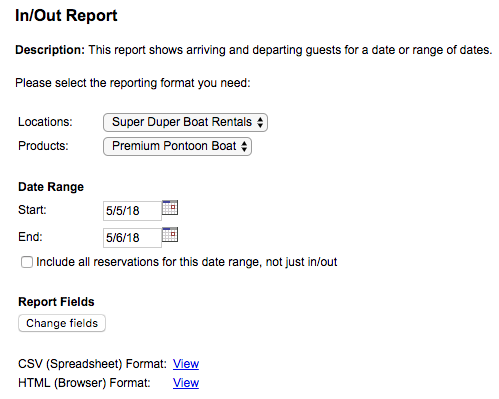
Based on your report settings, the report will show first all rentals that will be going OUT for the date range, and then it will show all rentals that will be coming IN for that date range. This will be noted in the Status column.

If you want to know more about all the features that WebReserv offers, visit us at www.webreserv.com, or send us an email to support@webreserv.com.
You asked, we answered! New Enhancements to WebReserv.
That’s right, we’re listening! We recently made a few enhancements to the booking system, and we’re excited to let you know about them. See what we’ve done below.
Added a Search by Reservation Date to the Reservations report.
The Reservations report is our most comprehensive report that gives you all the details about bookings within a time frame that you specify. You now have 2 options for that time frame: Date of Reservation or Start/End Date. Date of Reservation refers to the date that the booking was actually made by the customer. Start/End date refers to the actual visit date of the booking. This is a helpful enhancement as it will allow you to see how many bookings you had on a given day or set of days.
To access the report, navigate to Frontdesk – Reports in your account. Select the Reservations report.
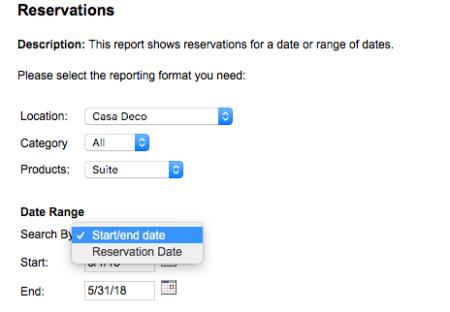
Additional Customization options on the Home page.
The first view that you see when you log into your WebReserv account is the Home page. This is your dashboard and will list all recent bookings in your system. You are able to customize what columns from the booking that you want to see on this page. We recently added additional options for columns to further customize how you want to view your bookings. New options include:
1. Customer’s phone number
2. Customer’s email address
3. Unit name (if defined)
4. Office Notes
To customize your Home page, click on “customize this page” from the Home page. On the Customize Page screen, drag and drop the desired columns from the Available Columns box to the Selected Columns box. Save your changes.
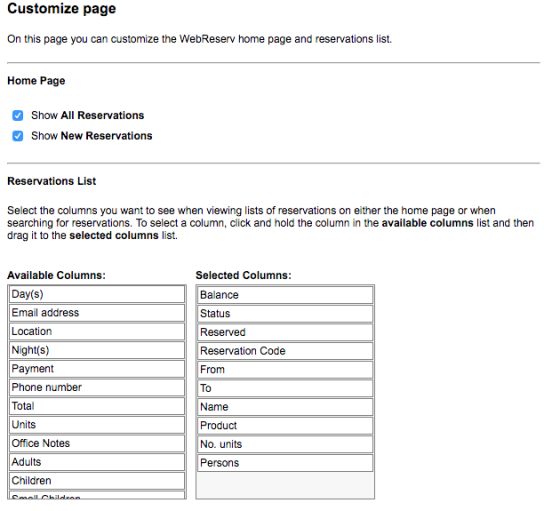
Here’s a look at the view with all the new options added. This is helpful for many businesses who want to be able to see the customer’s phone number at a glance to reach out to them, or see exactly what rental or camp site is booked for the day.

We always strive to make improvements and enhancements to our booking system. If you have any suggestions, please send us an email to support@webreserv.com. We’d love to hear from you!
Daily Manifest Added to Reports
We recently added a new report to our list of available reports in WebReserv: Manifest Report. This report is great for businesses that need a daily look at who is booked for a given day(s). It helpful when assigning guides to your tours, or ensuring you have enough staff on hand for your rentals.
To access this report, go to Frontdesk – Reports – Manifest Report.
Customize the report:
- Select which tour/rental (Products) you want to view.
- Enter the date range.
- Pick a time slot (Schedule), if applicable.
- Select Change Fields to customize columns in the report.
- Choose to download into a CSV (spreadsheet) or open in a new window (Browser)

Click View to run the report. See below shown in the HTML format.

This is a great addition to the already robust report options in WebReserv.
7Ps Series – Part 3: Is your price policy for you own good?
 A quick read on how your pricing policy might make more harm than good to your business.
A quick read on how your pricing policy might make more harm than good to your business.
Some weeks ago we published a write up on Product, one of the 7P’s in your value proposition. We hopefully inspired you to have a closer look at whether you are really selling what you think you are selling and whether you are differentiated enough? Did you have a chance to do it? Did it make you consider applying some changes?
At least we hope we stirred up things a bit. Nothing new comes out of repeating the same thing over and over again.
In this article in this series will we continue were we left and look a bit more thorough at the P Price.
As always our small disclaimer. We are only here to inspire you to optimize and grow your business and we can’t give you a guarantee. But take advantage of our lessons learned the hard way.
P3: Price
As with the other P’s Price is an endless topic and 100’s of books have been written about pricing, pricing policies and best practices. Here is one also being an easy read. “The psychology of price: How to use price to increase demand, profit and customer satisfaction” by Leigh Caldwell. You can find it on Amazon.
In the scope of this article we will highlight some of those practices that might help you.
The Sweet Spot
As with your products and services also your price policy comes down to finding the sweet spot. You can try to establish that sweet spot by yourself, but at the end you are at the mercy of your customers although you of course have a variety of marketing tools to influence and bias their mercy so to speak. But eventually the sweet spot will be determined by them and not you.
It’s obvious that you would love to be able to cash in a high margin on each product or service provided by you and not just hoover over the breakeven point. So being at least profitable is basic. But as of that point how profitable you are is purely a question of the perceived value from your customers point of view vs your costs.
A way to do that before launching your products is of course to survey the market and get feedback from potential customers. Another way is by thoroughly making a matrix and benchmark your product up against the other ones out there and see where you objectively fit in. I say objectively because there is the factor of brand awareness and association that is difficult to put a value on.
Another way of doing it, either before are after launch is to resort to a technique that is normally used to improve websites, conversion rates, sign ups, clicks etc in the online world. Split testing (also referred to as A/B testing or multivariate testing).
Split testing is a method of conducting monitored, randomized (or not) experiments with the goal of improving customer response to your product and pricing. A simple way to do it is, especially online, is to alter between 2 prices for the same product on a constant basis (daily, weekly etc) to understand the price elasticity of your product (how much are people willing to spend). Another way is to launch the same product with two different messages, images, etc. Simply test what people respond to.
TIP: Do as much of this as you can previous to your launch, and preferably in a way that the customer don’t perceive that they are part of an experiment as customers most likely will be turned away by the duality in your pricing and marketing approach. A certain consistency foments trust.
Once you hit the sweet spot of what you and your products are worth for the customers then you have automatically also hit the sweet spot of your position in the market. Not just your price position observed isolated, but also in relation to what you offer.
Hence can you not study your desired market positioning from either P’s point of view, but have to force yourself to look at the entire value proposition that you are offering. You are working in a matrix of things. Having said that can you of course determine where in the market you want to position yourself in accordance to where your competitors are positioned on the value/money scale or to where your desired aspirations are, and we are by no means saying you shouldn’t do that. That means once identified the desired position you have to mould your value proposition to that position and the expectations that come with it.
Do you on the other hand already have a determined set of services and products, it only makes sense to offer a balance that your customers are comfortable with or attracted to. In other words is it difficult to make a 3 star hotel grasp for 5 star hotel guests.
So how does one offer that balance?
Perceived Value
Let’s stick to our previous example of the guided tour business. Whether by foot, scooter, Segway, a FPV drone tour (First Person View… yes, they exist) or horseback, your customer doesn’t pay for what he thinks the tours costs you to organize plus a little margin for you… he pays for what he thinks its worth. It’s a very basic statement, but business owners tend to forget that. They add features, specs, bells and whistles to their products, but are then either not targeting the right audience for that upscale product or creating a service that no one was interested in in the first place.
Check out the trend over the last couple of years of high end customers (from a purchase power point of view) who pay fortunes to get back to basic. Simple, genuine and honest products. Whilst at the same time having other people with similar affluence preferably opting for the classical luxurious or even ostentatious touch. Then you have all those in between and of course you also have those on a tight budget.
Each of these brackets of clients have their own concept of perceived value and you must know that concept of theirs before you can design your product or service and before you can put a price tag on it. Whether to start with the product first and then the price or vice versa or whether to define which market you are interested in addressing is your decision. But the decision on either part has to be aligned. And don’t forget. Is your offer only catering to a very small market because of the value/money ratio, keep that offer but add another one with a slightly different ratio allowing you to target a potential larger customer base. Selling 1 at 1000EUR is just as good as selling 4 at 250EUR if the invested resources are the same.
Just keep in mind that you can only do that as long as both customer brackets are very confident about them having purchased two absolutely different products from a perceived value point of view despite being from the same brand (it’s a balance hard to strike… so be careful. You don’t want to undermine a product perceived as premium with suddenly masses displaying the same brand at an inferior price)
Price Wars – Competing on Price
Nowadays to find a market niche all to you is if not impossible at least rare. Transparency of things today makes it difficult to keep anything secret. But you surely can find less crowded markets which for small businesses unless they are revolutionising the market, might be the best suited.
Because once competition arrives, the to be harvested amount of customers need to be shared (although with the arrival of new competitors also new customers will come due to more marketing, noise, attention etc.)
Since the invention of currency or tradable value of whatever kind, along came negotiation, discounts and bargains. Hence many business owners when under pressure because of declining numbers of clients/turnover resort to pricing as their first option. The moral of competing on price however is very simple… there are two winners.
- The client will always win
- …and the competitor with the deepest pockets will win… the first round at least… until a competitor with even deeper pockets attacks you once your pockets are empty from last price war.
First best advice…don’t engage in competition on price. Yes… you will have to play along from time to time but try not to be the initiator. Again…find your sweet spot. Leave room for the one with a perceived inferior or superior product. Create clear brackets in the market and try to stay out of each other’s markets and make the customers that perceive you are in their sweet spot loyal to you. Price fixing between you and your competitor is illegal in the majority of countries and industries so don’t even think of going down that route.
But there are so many competitors in my segment you say. Well… choose another segment or differentiate on perceived value.
Improving & Optimising margins
Without entering the field of negotiation with your providers, contractors, employees etc. which you hopefully are doing on a regular basis already what can you then do to squeeze out an extra % of margin for all your effort?
If increasing your price isn’t an option because your customers don’t perceive the value to be worth it, or because it makes you a direct competitor to another brand, you are left with one option. Magic and illusions in the outmost positive interpretation of the concepts.
Bundle your product or service with another product, service, feature or add on that from a customer point of view give much bang for bucks from their perceived value, but at the least expense for you. Simultaneously package it in a way that your competitor doesn’t directly interpret it as an attack to his premium market when you start pricing it higher.
Some simple examples:
If your tour starts in the outskirts of the city but you happen to live in the city, include the service to bring your clients forth/back from the city centre (you have to go there anyway).
If you know that a shop, bakery, event etc. is going to have freebees, music, action of some sort, include it in the package for a small premium. It’s close to zero cost for you, extra perceived value for the client and won’t be seen as a direct competitive move as you are actually offering more than they are hence your increased price.
You get the idea.
Special Offers
You can’t always avoid to slash prices and to offer special promotions in order to attract potential customers still not knowing you or to make people repeat.
But also here, try to highlight your perceived worth in the eyes of existing customer in your promotion message to reduce the actual price adjustment to a minimum. Introduce bundling, one offs, bring a friend, future discounts and other promotion techniques, and communicate them in a such clear way that your competitor knows you are only trying to grow your market… not attack his.
Maybe all above sound a bit vague or theoretical, but all suggestions are merely simplified human psychology. The perceived value of the entire experience of being a customer with you is what determines what you can charge them. It’s about feelings, emotions, satisfaction, feeding that inner want to feel good part of us that you are appealing to.
So put yourself in your customers and competitor shoes and think of your value proposition including pricing from their point of view.
Sum up of question you have to ask yourself:
- Are your prices aligned with the perceived value of you service and brand (don’t forget that a lot of premium brands don’t sell a superior product but merely a superior experience, feel good factor and association and lifestyle)?
- Are you addressing the right market?
- Are you communicating clearly to clients as well as to competitor?
- And again… are you different and are you make it seen?
Don’t forget to check out our next article on Place and its impact on your business coming soon right here on our blog.
In case you are not following us already sign up for our newsletter and you’ll receive our articles straight to your inbox.
If there is something you would like us to elaborate more on or something that wasn’t clear, then let us know and we will come back to you or maybe post it here on our blog. Please also feel free to comment here below.
See you next time. Until then good business!
About the autor:
Christian Funck, M.Sc. International Marketing & Management
Christian is Interim Manager, Consultant, Entrepreneur and highly experienced and versatile Leader in international context. 15 years+ experience in analysing/elaborating/implementing business and marketing strategies in culturally, politically and economic “adverse” conditions.
